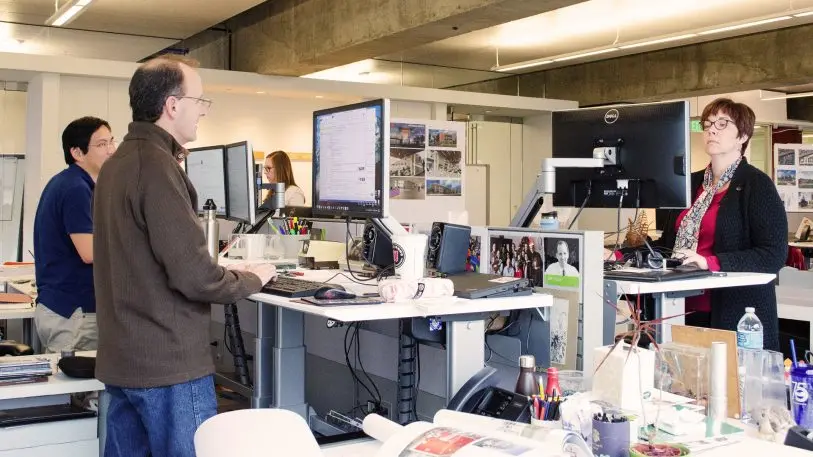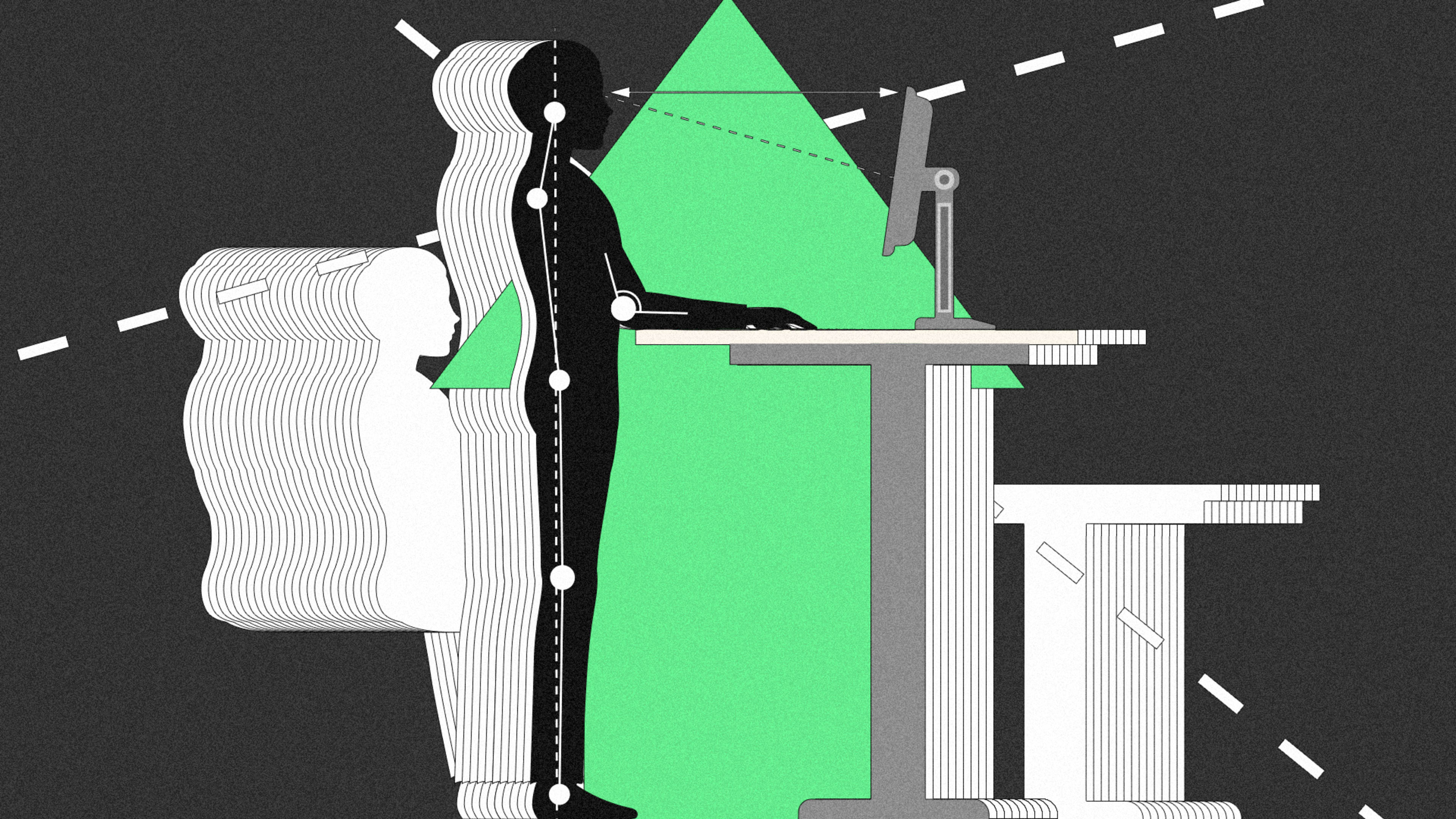To sit or stand? It’s the great debate of modern office drones. A new, yearlong study about the ergonomics of work suggests you might want to do both. In the study, people report feeling physically better, more active, and more productive after using sit/stand desks.
The insights come from a paper published by the Icahn School of Medicine at Mount Sinai, in collaboration with researchers from the Center for Active Design, global architecture firm Perkins+Will, and furniture manufacturer Steelcase. Their study tracked 67 participants in a real office environment (architects in the Perkins+Will office in Atlanta) over a year. Half were randomly assigned to traditional sitting desks, and the other half a desk that could switch between sitting and standing modes.
“A lot of the literature [to date] was done in the lab–artificial places,” says Elizabeth Garland, the associate professor at Mount Sinai who led the study. “This is one of the first projects for a such a long period of time in a real-life situation.” Put simply, it’s hard to study the human factors involved with the long-term ergonomics of work life if people aren’t actually being studied at work.

For the desk sitters, life pretty much went on as usual. They took a class on ergonomics, learning about posture and the benefits of taking walks at the beginning of the study, but data didn’t show them moving much more throughout the day. For the sit-stand group, however, life changed significantly. Six months into the study, the group was sitting 12% less than when they first got the desks. Even though people weren’t standing all day, the effect of more frequent standing was significant. An estimated 61% of them reported that the desk positively improved their health outside the workplace, not just inside the cubicle. “Participants reported moving more, feeling stronger, more limber and having less pain in muscles, joints, and back,” says the study. “They reported more energy and positive outlook, being more aware of standing posture, and were inspired to create standing workstations in their home.”
On top of that, 65% of the sit-stand participants reported greater productivity. “We always ask, does this have an ROI?” explains Joanna Frank, CEO at the Center for Active Design. “And so we did ask those questions. There was a consistent and high-level self-reported increase in productivity.”
Keep in mind, all of these results were self-reported, and participants may have overestimated how much better they felt, or worked, as a result of their new desk. The gold standard in science–double blind experiments–aren’t feasible when you’re researching standing desks, since you can design a study in which someone has no idea whether she’s standing or not at work.
But the study is important for quantifying how people felt using sit-stand desks over time. The new conclusions come on the heels of another recent study that was devastating for the practice of standing at work. It discovered that a standing desk might actually impede someone’s ability to concentrate. I asked Garland if her new study negated that old one. She said, no, not necessarily. Based on the interviews in her study, Garland said that sit-stand participants self-regulated their tasks well, and chose easier jobs to knock out while standing. Many opted to send emails or take conference calls while on their feet, and sit for more cognitively challenging work. The suggestion: Any dip in users’ concentration may be deliberate, not a function of the desk setup itself.
The catch of this latest research is that the sit-stand desks had the best effects for people who were underweight or of normal weight. Participants who were overweight and obese generally kept sitting, even when presented with the option to stand. “Which came first. Are they overweight because they sit all the time, and aren’t very active? Or are they not standing up because they’re overweight and in pain?” muses Garland. “We don’t know. We’d have to do another study to find out.”
The researchers believe that if there’s any takeaway from their research, it’s that employees should have the option to choose a sit-stand desk at work, as it could improve the way they feel inside and outside the office while also improving their productivity–once again proving that treating employees well is just good business.
Recognize your brand's excellence by applying to this year's Brands That Matters Awards before the early-rate deadline, May 3.
